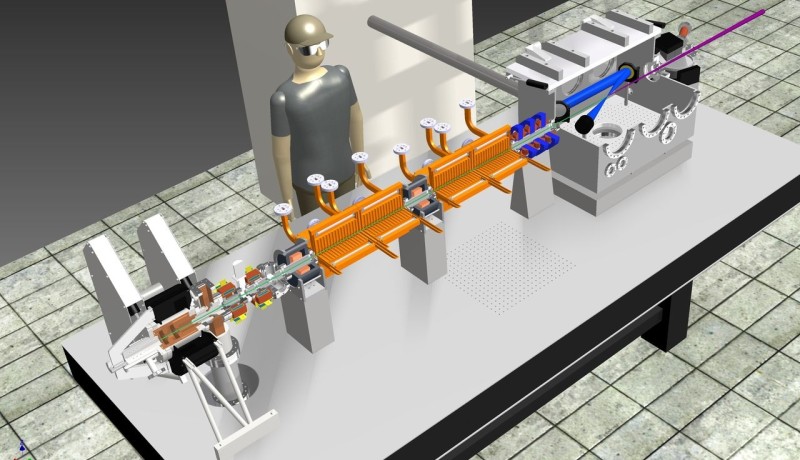Mini-synchrotron
on

Searching for a hidden layer in a masterpiece by Rembrandt, bringing to light metal fatigue in ships, predicting the hardening of the arteries: these are only a few of the potential applications of Smart*Light, an synchrotron that fits on a table top. Researchers from the Technical University Eindhoven and the TU Delft will develop and build this X-rays source within a consortium of other universities and companies. The intense X-ray radiation that this device will generate is currently only available from large and expensive facilities, of which there are not many.
Synchrotron
If, as a researcher, you would like to work with X-ray radiation, you have only two options: a compact X-ray tube that radiates uncontrolled X-rays in all directions, or visit one of the about 70 synchrotrons around the world – large facilities that at a high cost can produce an accurately directed and precise amount of energy. The most powerful source in Europe is the ESRF in Grenoble.
Scaled down
With Smart*Light, the consortium wants to jump into this void and build a 'scaled down synchrotron'. A compact and tunable X-ray source less than 4 meters long, which you can use to your heart's content in any lab. The expectation is that many different sectors have an application for such a device – in medical diagnostics, high-tech industries, aircraft, car and ship building, but also for art research. Using Smart*Light there is the potential to analyse the chemical composition of artworks layer by layer. This is not only of importance for conservation, but, for example, also for research into authenticity.
Collisions
The operation of this revolutionary X-ray source is based in the physical concept where X-rays are produced from collisions between laser light and accelerated electrons. The theory behind this is known as Inverse Compton Scattering, and has already been known for decades, but only recently has the necessary technology been sufficiently developed.


Discussion (0 comments)